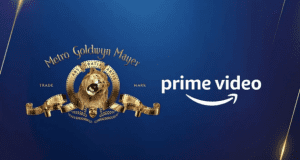S-C-I-S-S-O-R-S are one of the most versatile tools ever invented. Big thanks to the brilliant mind in Egypt who produced this around 1500 BC.
This pair of pivoted metal blades are widely used in households, offices, schools, hospitals, salons, farms and many more. Kids or adults; boys or girls—anyone can use it for whatever purpose it may serve.
As the centuries went by, the scissors have continuously evolved and were unstoppably reproduced with now 16 types of scissors being utilized around the globe.
For sure, you got curious about what all these are! This and more will be answered below:
‘Frequently Asked Questions’ (FAQS) about SCISSORS
- What are the different types of scissors?
- Grooming Scissors
- Hair Cutting Shears- also called as hairdressing or barber shears, these are extremely sharper than other scissors. These come either with a tang or a finger brace to allow the user to smoothly control it while haircutting.
- Hair Clippers- also called hair snips, these have razor sharp blades making them ideal for trimming or cutting hair. Aside from human hair, these can also be used for trimming sheep wool.
- Gardening Scissors- greatly used for agricultural and horticultural purposes. Here are its specialized types:
- Hedge Trimmers- either manual or machine operated, are used for trimming bushes or shrubs. These have different sizes and styles suitable for your garden chores.
- Grass Shears- have a perpendicular orientation to the blades with long firm handles for easy use. These are ideal for pruning or cutting grass or lawn edges.
- Pruning Shears- are referred to as had pruners by Americans. Commonly utilized for pruning hard and long tree stems or branches.
- Medical Scissors- designed to serve as cutting instruments for medical professionals. Here are its specialized types:
- Bandage Scissors- also known as the nurse’s scissors, these have two small blades. The top blade has a blunt edge while the bottom one has a sharp and pointed tip, making it suitable for smoothly opening a bandage without hurting the patient.
- Trauma Shears- also known as tuff cuts, these have bent metal blades, long lever arms and plastic handles. The blades have a blunt tips, making them safe to slide across the skin while cutting off soft or hard fabrics used in clothing or accessories.
- Sewing Scissors- used for crafting together or sewing purposes. Here are its specialized types:
- Dressmaker’s Shears- used for cutting fabric as they have distinct, sharp and long blades.
- Tailor’s Scissors- used for cutting heavy or thick fabrics and leather layers as they have razor-sharp blades and knife edges.
- Pinking Shears- used for cutting woven cloth as they have jagged blades that avoid the fabric from fraying.
- Buttonhole Scissors- used for making buttonholes, as the name suggests, without damaging the fabric as they have two blades; one with a blunt distal end and the other with tapered cutting edges.
- Applique Scissors- used to cut and trim in close proximity to the fabric as they have paddle-shaped blades and offset handles.
- Embroidery Scissors- with their fine and sharp tips, these are ideal for minuscule snips and can even get in between beads, threads, sequences and the like.
- All-Purpose Scissors (Crafting Scissors)- with their long blades and pointed tips, these are perfect for providing long, straight and smooth cuts in different materials. These can be used for DIY crafts, scrapbooking or even in schools and kitchens.
- Right and Left-Handed Scissors- these are specially designed for both right and left-handed persons. They have irregular blades that vary in shape and orientation.
g. Ambidextrous scissors- these rare types are also suitable for right and lefthanded individuals as their handles are symmetrical. As for the blades, these easily rotate due to the strong pivots.
2. What is the difference between scissors and shears?
Both of these are used interchangeably by many people.
Although these are both cutting or snipping tools, they actually have unique qualities.
SCISSORS:
- Have equally sized rings; each can only take one finger at a time
- Have less than 6 inches blades
SHEARS:
- Have small and big rings; the larger can accommodate two or more fingers
- Have longer than 6 inches blades
- Have extending finger rest or tang
- Which blades are sharper?
Many people suggest buying scissors or shears that are made of Japan stainless steel as it is dubbed as the best scissors steel in the world. Those manufactured in other countries like Korea, Taiwan, China are also preferred as they also have good qualities but with laxer metals.
- Are stainless steel-made scissors stain proof?
No. Despite having high-quality sharp blades, the scissors made of stainless steel are not 100% resistant to stains or rust.
Don’t be deceived by indications such as “Miracle Steel, Smart Steel or Damascus Steel” because these are not real steel types.
- What is the order of stainless steel in terms of quality?
Have you ever wondered what those numbers with letters indicated on the scissors specifications mean? Well, those are actually the basis to determine how sharp your snipping tool is.
Categories of Steel (highest to lowest):
- ATS-314 (highest amounts of Cobalt, Vanadium & Titanium in a steel category)
- V-10 G or V-10 Gold
- V-10
- V-1 (measurable amounts of Vanadium* & Titanium start here)
- S-3
- S-1 (“cobalted” steels start at this category)
- 440C
- 440A
- 420
(used in almost all Pakistani scissors)
- Where can I buy high-quality scissors or shears?
Variety of scissors and shears are available in the markets but if you want to select the best type for you in a hassle-free way, see these highly recommended online shopping sites:
For Gardening scissors:
For Grooming scissors:















